
Under Control: Burning Lakeshore State Park!
April 15, 2025 | Topics: Events, Spotlight
By Eddee Daniel
I love a good burn! And this was a very good one. I’d been anticipating this day with excitement ever since learning of the plan for the first-ever prescribed burn at Lakeshore State Park. It’s not every day you get to watch an urban park go up in flames, especially with the city skyline for a backdrop!
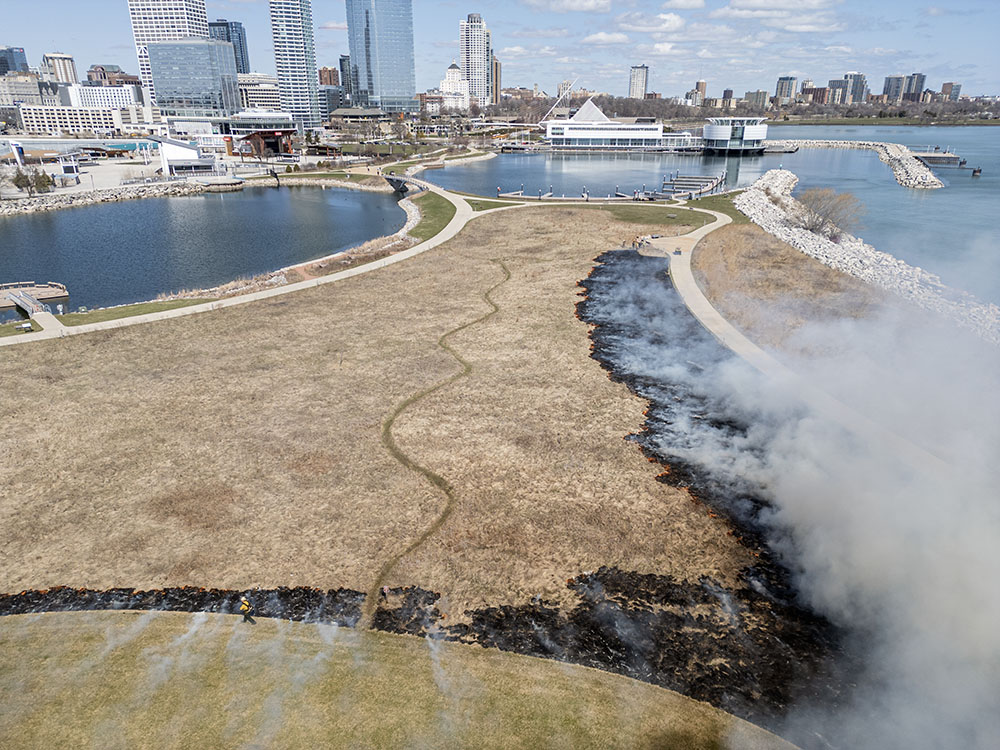
The “burn window” was announced to be Monday, March 31 through Wednesday, April 9, 2025—which meant that the burn would be conducted sometime during that period if, and it’s a big if, weather conditions permit. A prescribed burn is also known as a controlled burn. Two things determine how well a burn is controlled, it seems to me: the skill and experience of the burn crew and … the weather.

I’ve documented quite a few previous burns, but the burn crew fielded by Good Oak Ecological Services at Lakeshore State Park was the largest I’ve experienced. And the weather? The sky was clear, the temperature a wintry 42°, and there was a light westerly breeze—which meant the smoke would blow out over the lake. Perfect conditions!
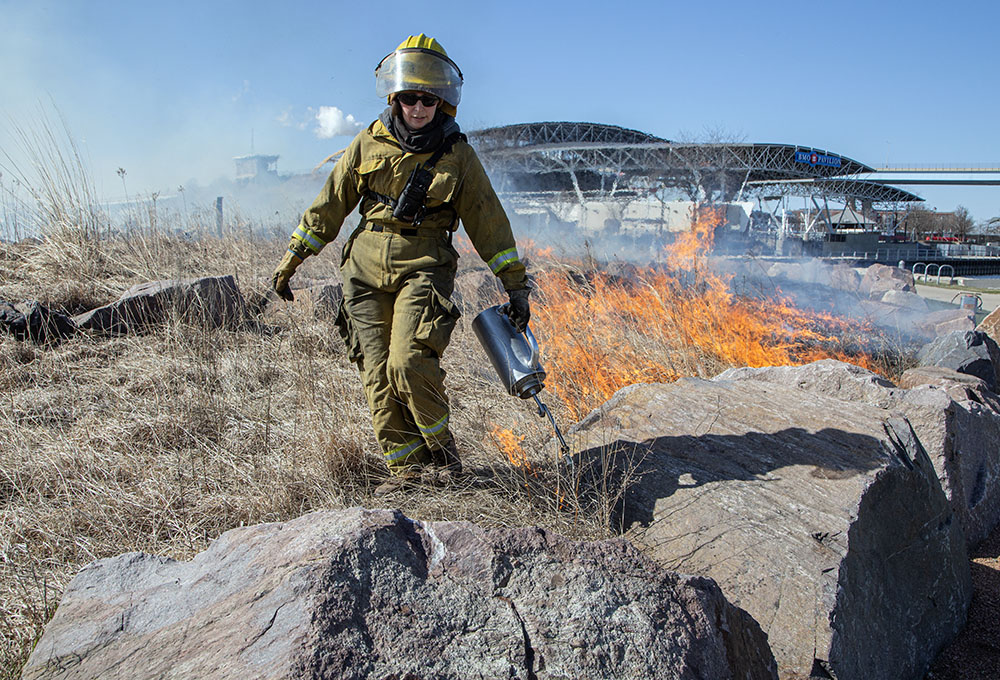
The crew didn’t hesitate. Garbed in fire-retardant uniforms and bearing a variety of fire-starting and fire-suppressing gear, they rolled into the park like a small infantry platoon. Starting downwind at the southern end of the park, the first spark was ignited immediately. Drip torches containing a mixture of diesel fuel and gasoline were employed to spread the flames along the edge of each prescribed section. Water sprayers were employed on the outside edges of the section to contain the blaze.
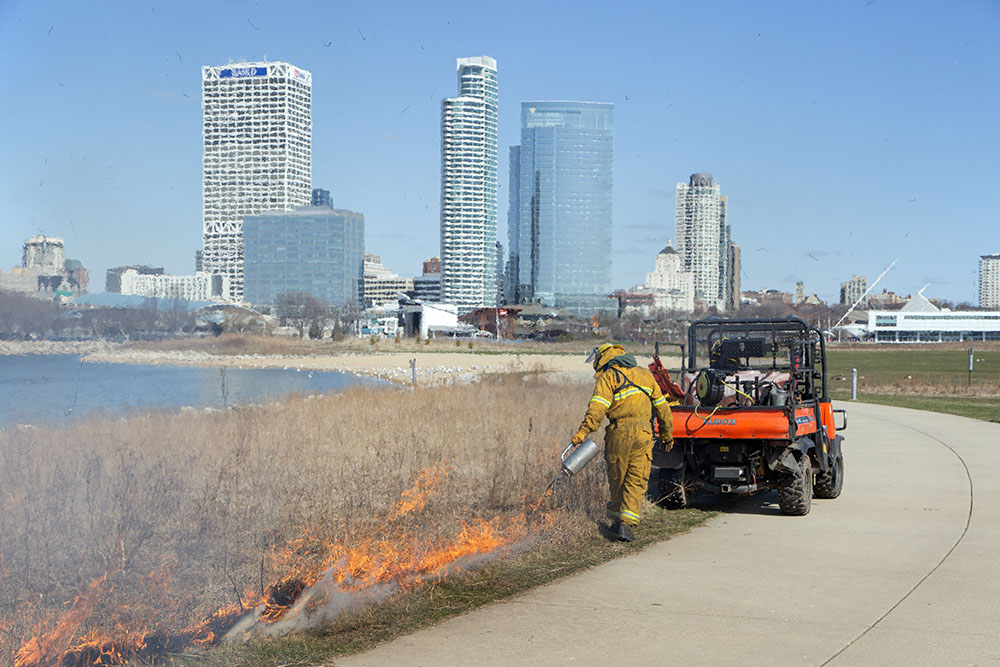
Some crew members tamped down flare-ups at the edges of the burn while others used portable sprayers to protect immobile features of the landscape, such as lighting stanchions and bird houses. The size of the crew enabled them to tackle more than one discrete section at a time. Before long a plume of smoke rose dramatically skyward that could be seen throughout Milwaukee’s lakefront. (Someone I know who lives at St. John’s on the Lake at the east end of Brady Street emailed me to say she’d seen it from that far away.)
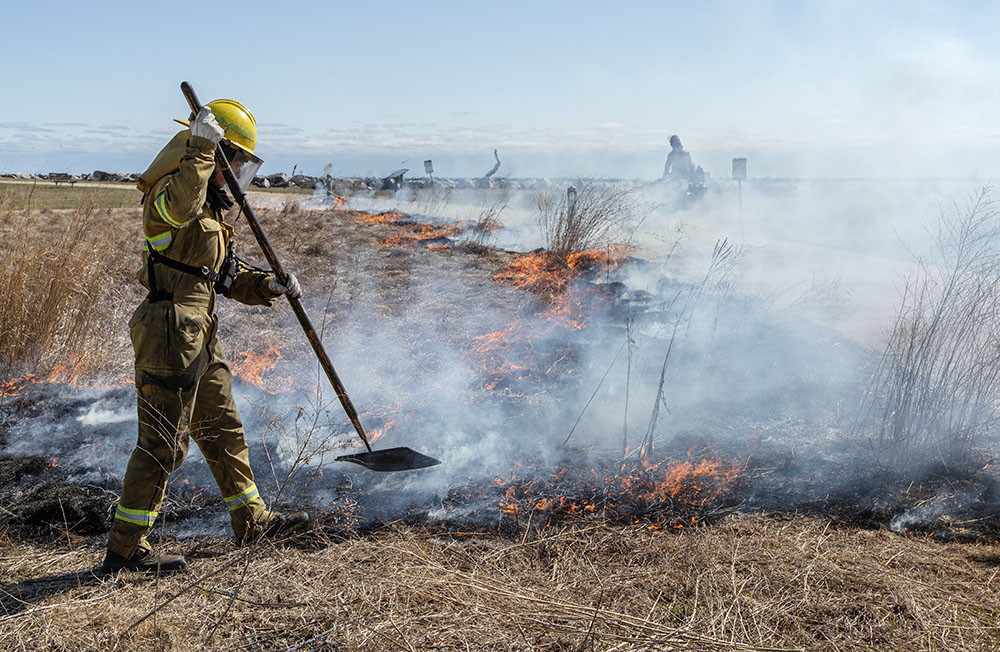
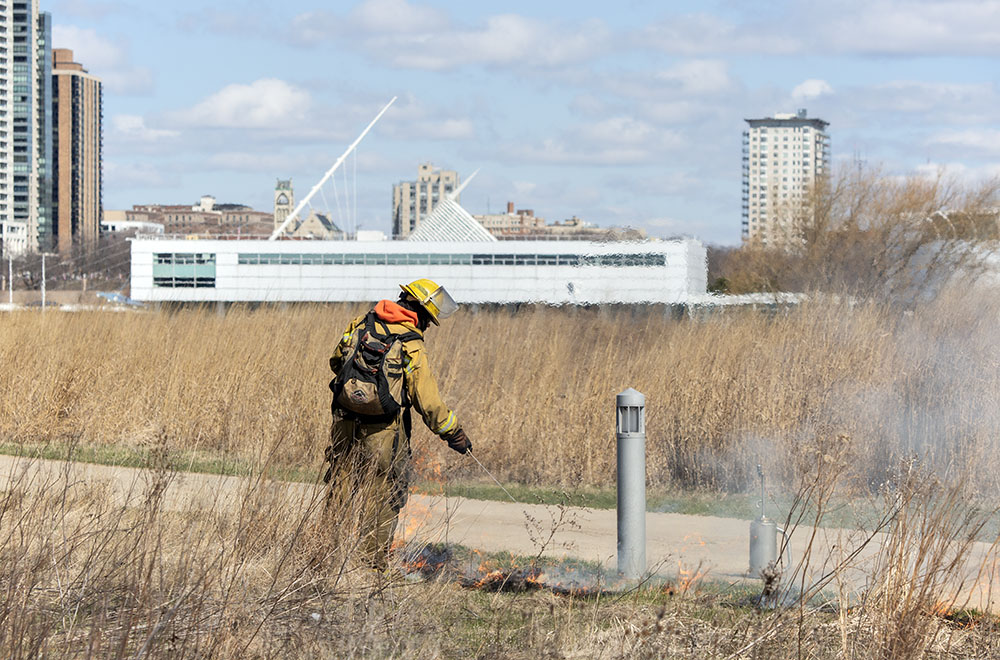
Although only the prairie sections were burned (9.5 acres out of the 22-acre park), the activity encompassed the entire park. This meant that the park—a very popular destination for cyclists, joggers, dog-walkers, birders, strollers, and many others—was closed for the duration of the burn. The purpose of prescribed burns like this one is to support healthy ecosystems for a variety of plants and animals that are native to Wisconsin. Historically, wildfires and fires used as a habitat management tool by Indigenous communities removed dead vegetation and stimulated native plant propagation. Prescribed burns provide the same benefits as historic fire but occur under safer weather and fuel conditions (compared to most wildfires).
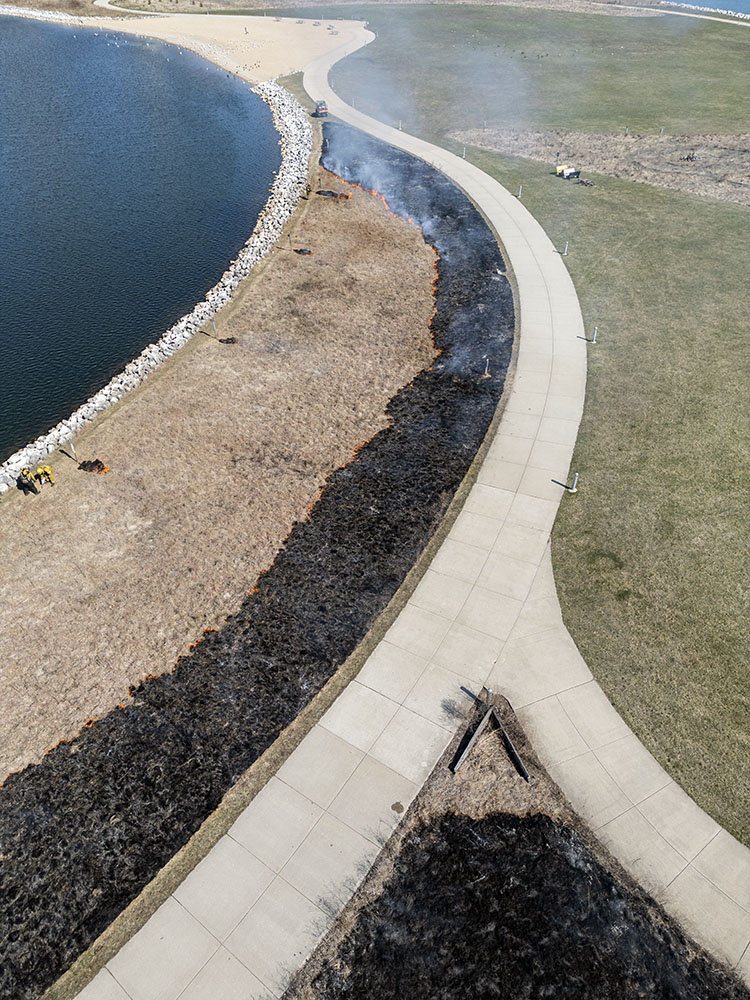
These burns reduce hazardous organic fuels, improve foraging and nesting with revitalized vegetation, and stimulate the growth of root systems, which enhances their ability to store carbon. They also help reduce the prevalence of invasive plant species, which, unlike native species, have not adapted to survive fires.
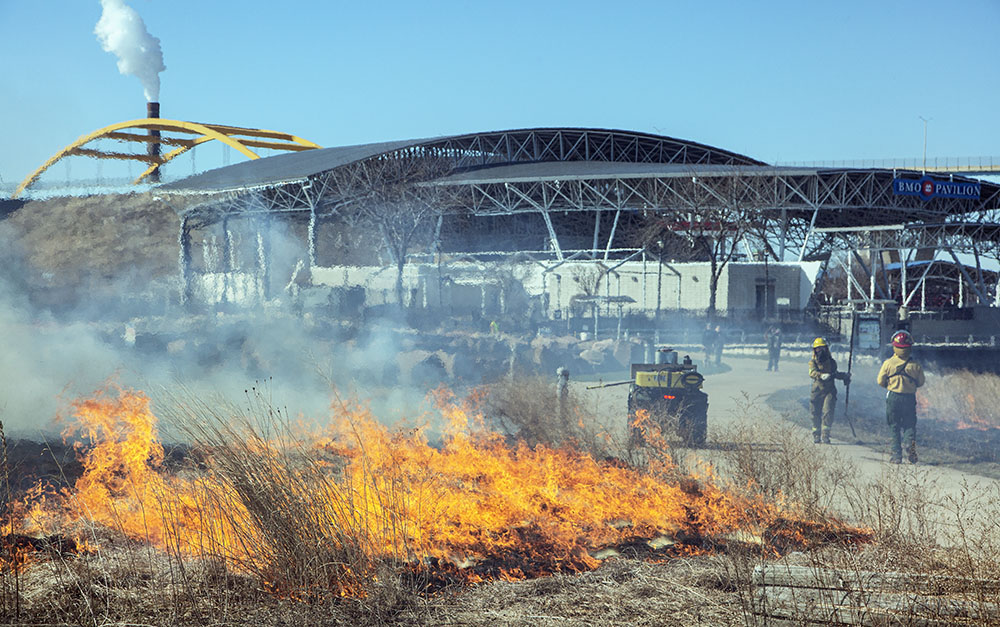
“The prescribed burn will enhance the prairie habitat utilized by a number of bird and insect species, along with reducing runoff and improving native prairie success,” said Elaine Zautke, Lakeshore State Park property manager. “Following the burn, additional native seeding and plant installations will occur this summer, further improving the prairie.”
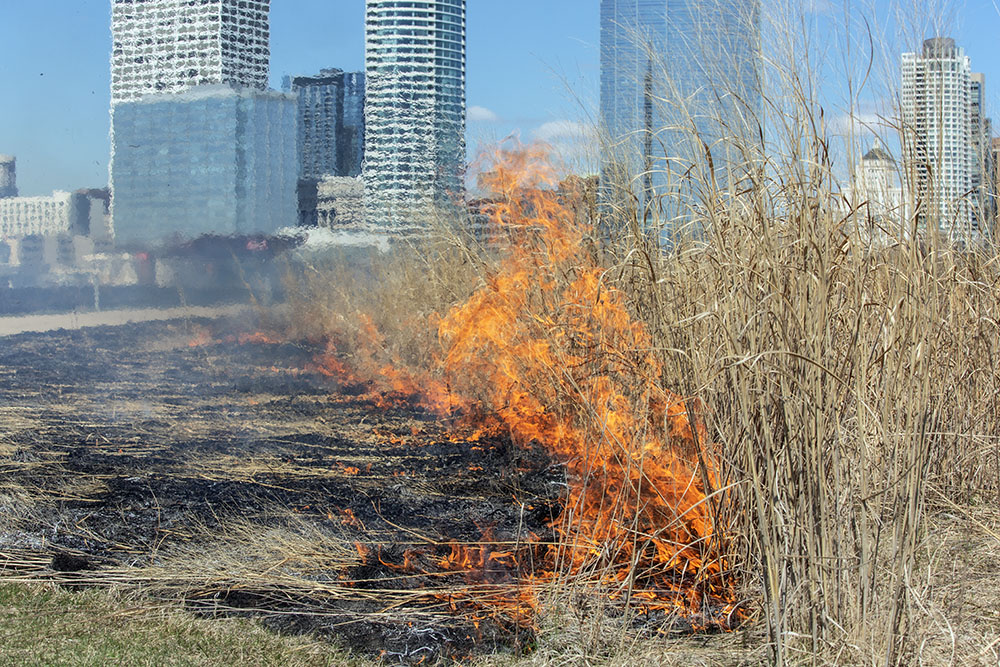
Because they are well controlled and burn at a leisurely pace and intensity (crew members easily and readily stepped across the fire line), wildlife such as insects, birds, and small mammals can escape its path. Occasionally, singed dead animals are found amongst the ashes, but these carcasses almost invariably were present before the burn began. I received this story in an email from the DNR staff in attendance:
“The gulls in the park frequently pick up rusty crayfish (an invasive species) as food out of the rocky shoreline. Occasionally, a crayfish fights back enough for the gull to abandon its attempt and drop it. One such rusty crayfish was ‘cooked’ in the blaze and visible in the bright red color they turn when boiled.”

As important as it was, the burn wasn’t the only exciting thing drawing the attention of DNR staff that morning. They turned their binoculars on a number of notable waterfowls. A loon was visible floating around in the ‘lagoon’ all day. A bufflehead was observed, along with red-breasted mergansers and greater and lesser scaup, which were taking advantage of the open water.
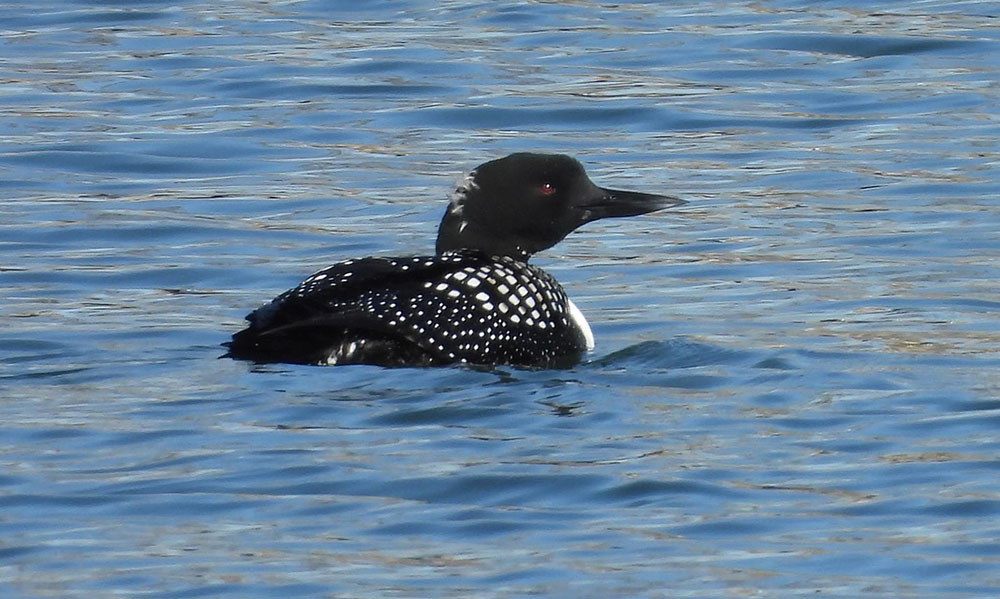
Things did not go completely as planned. Remember the wild card: weather, which is changeable. A couple hours into the action the wind unexpectedly shifted to the east, which meant the now considerable plume of smoke began to drift towards downtown Milwaukee and over I-794 and Lincoln Memorial Drive. While the crew was debating about when they would have to cut the burn short, however, the wind shifted back to the west.
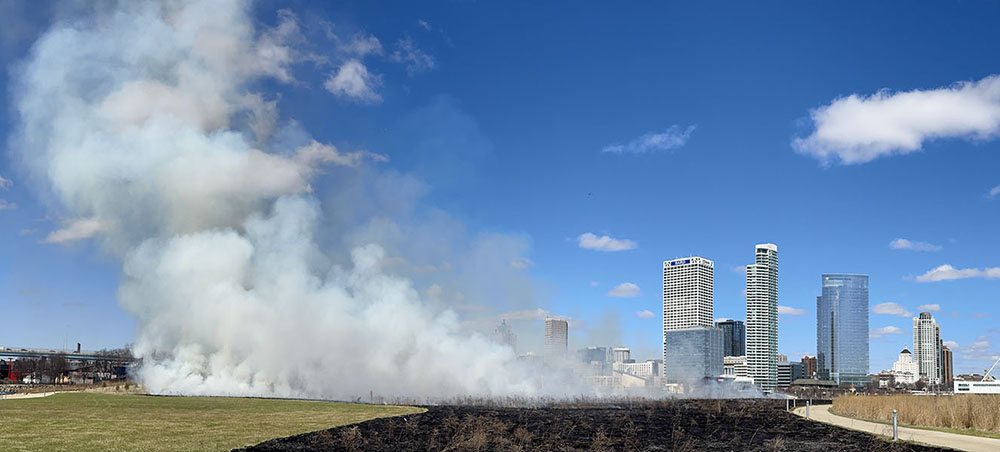
I look forward to revisiting Lakeshore State Park this summer when the prairies will bloom again. The revitalizing results of the burn should be discernible in the diversity and fecundity of the wildflowers.
Lakeshore State Park is hosting a “Controlled Burn Hike” this Saturday, April 19 from 9:30 to 10:30 am. Join the park naturalist to learn more about the importance of the burn and to see the results up close and personal. Meet at the south entrance park sign.
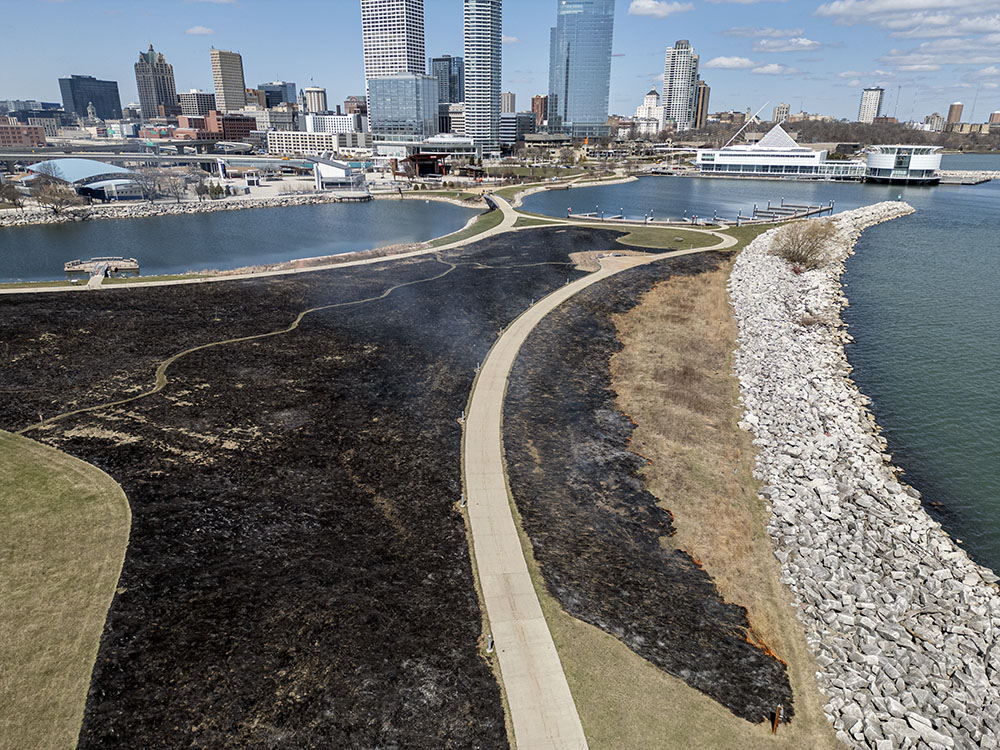
The project was funded through a variety of sources, including the Natural Resources Foundation of Wisconsin, Fund for Lake Michigan, and Friends of Lakeshore State Park.
For more information about Lakeshore State Park go to our Find-a-Park page.
More information about DNR prescribed fire operations is available on the DNR’s Prescribed Fire webpage.
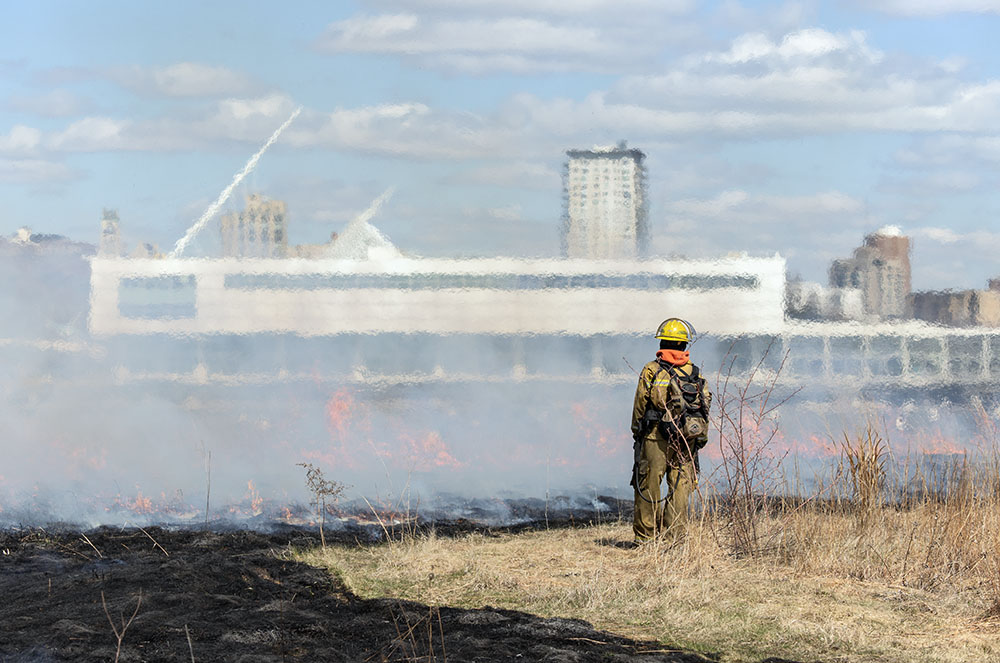

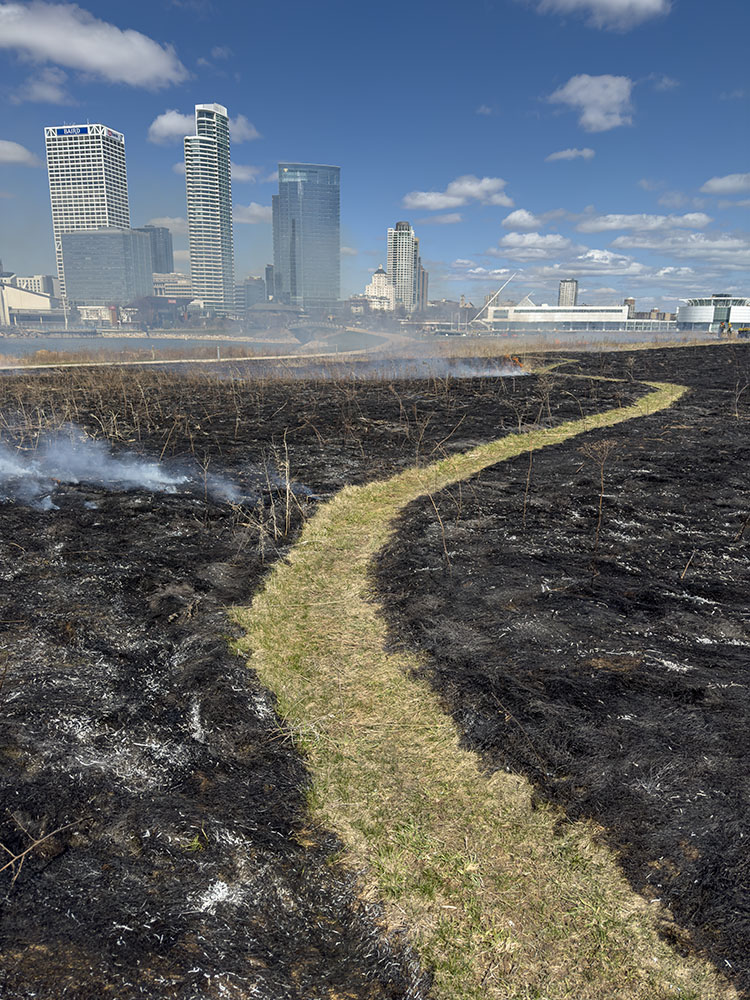
Additional photos of the Lakeshore State Park burn can be seen in my Flickr album.
Related stories and albums (on Flickr):
Lakeshore State Park was set ablaze Tuesday—intentionally. Here’s why. Mke Journal Sentinel
Story: A controlled burn at Forest Beach Migratory Preserve
Story: Emphasizing the “Control” in Controlled Burn at Pringle Nature Center
Story: Fellenz Woods Preserve: A controlled burn
Album: Burning Three Bridges Park
Story: Burning Washington Park
Album: Burning Bong
Story: An Earth Day Success Story: MMSD’s Greenseams® Program Rejuvenates a Restored Prairie
Some of the information in this story came from a DNR press release about the burn, as well as email communications with DNR staff. Thank you!
Eddee Daniel is a board member of Preserve Our Parks. He donated his photography services to the DNR to assist with documentation of the first prescribed burn on the site. All photos by Eddee Daniel except as noted.
2 thoughts on "Under Control: Burning Lakeshore State Park!"
Comments are closed.


Great expose!
Well done Eddie. I enjoyed the article and the pictures. Fascinating!